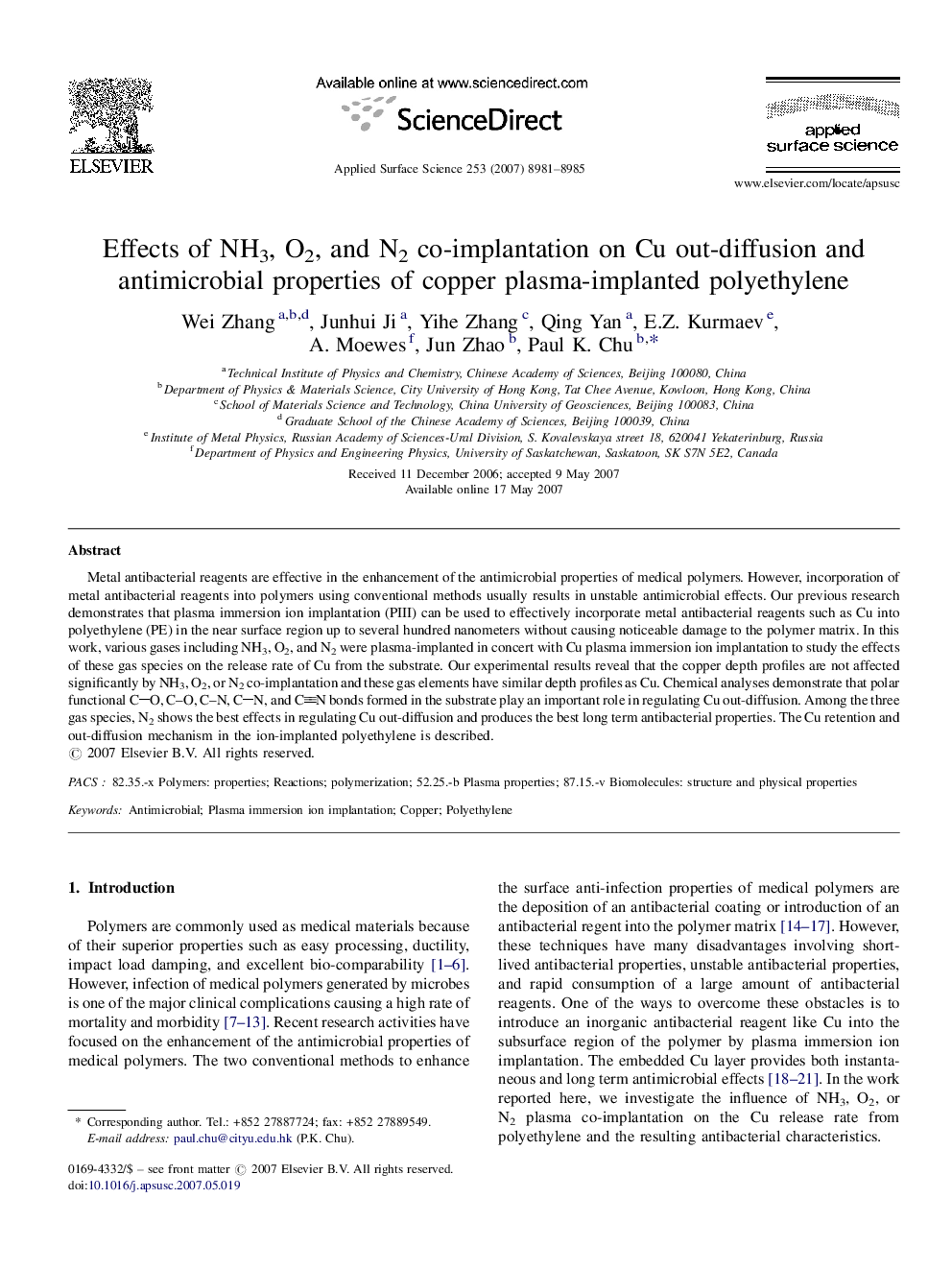| Article ID | Journal | Published Year | Pages | File Type |
|---|---|---|---|---|
| 5363794 | Applied Surface Science | 2007 | 5 Pages |
Abstract
Metal antibacterial reagents are effective in the enhancement of the antimicrobial properties of medical polymers. However, incorporation of metal antibacterial reagents into polymers using conventional methods usually results in unstable antimicrobial effects. Our previous research demonstrates that plasma immersion ion implantation (PIII) can be used to effectively incorporate metal antibacterial reagents such as Cu into polyethylene (PE) in the near surface region up to several hundred nanometers without causing noticeable damage to the polymer matrix. In this work, various gases including NH3, O2, and N2 were plasma-implanted in concert with Cu plasma immersion ion implantation to study the effects of these gas species on the release rate of Cu from the substrate. Our experimental results reveal that the copper depth profiles are not affected significantly by NH3, O2, or N2 co-implantation and these gas elements have similar depth profiles as Cu. Chemical analyses demonstrate that polar functional CO, CO, CN, CN, and CN bonds formed in the substrate play an important role in regulating Cu out-diffusion. Among the three gas species, N2 shows the best effects in regulating Cu out-diffusion and produces the best long term antibacterial properties. The Cu retention and out-diffusion mechanism in the ion-implanted polyethylene is described.
Related Topics
Physical Sciences and Engineering
Chemistry
Physical and Theoretical Chemistry
Authors
Wei Zhang, Junhui Ji, Yihe Zhang, Qing Yan, E.Z. Kurmaev, A. Moewes, Jun Zhao, Paul K. Chu,
